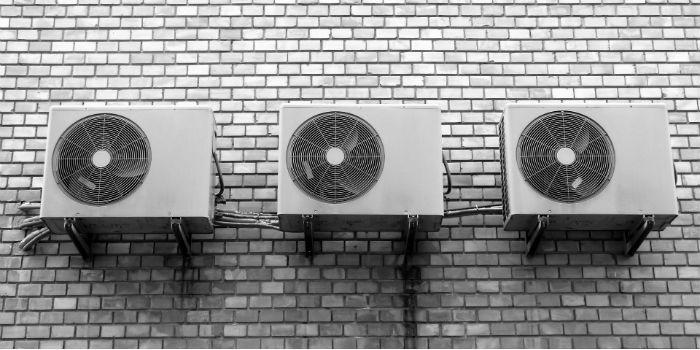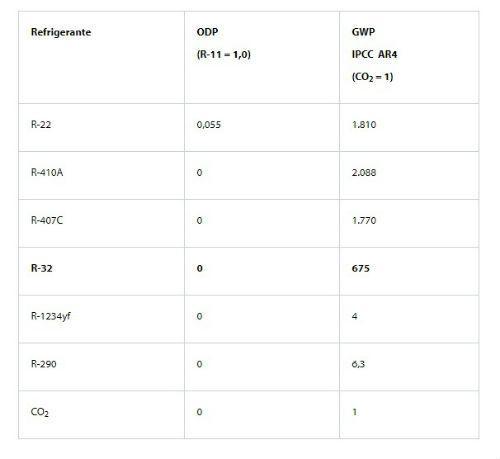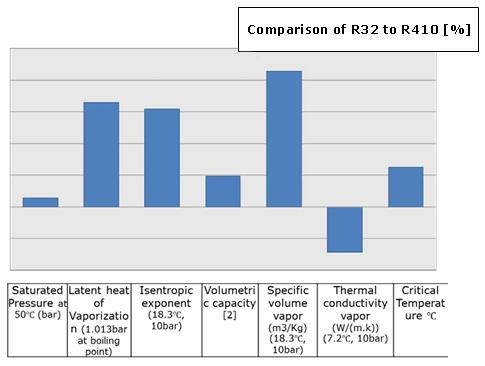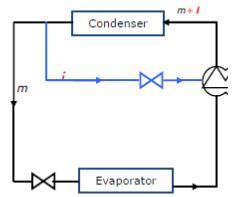 Its implementation in Europe continues to grow. In Latin America it is still waiting for its massification, so it is worth knowing a little more about this solution.
Its implementation in Europe continues to grow. In Latin America it is still waiting for its massification, so it is worth knowing a little more about this solution.
by Danfoss
The refrigeration and air conditioning sector has made tremendous strides over the past two decades in reducing the use of ozone-depleting refrigerants. The original objectives of the Montreal Protocol, signed in 1987 to reduce emissions of ozone-depleting substances, are being met and even exceeded. A consequence of these initiatives was that, during the 90s and the first years of the twenty-first century, there was considerable uncertainty regarding the possible refrigerants of the future. A new path is now in sight, defined by the global agenda on climate change and global warming.
We must change our environmental management. For this reason, many governments around the world are creating regulations in an effort to limit negative environmental impacts.
From a global perspective, the trend is that the sector is increasingly tending towards the use of natural refrigerants, provided that this is technologically feasible. Synthetic refrigerants are likely to continue to play an important role in the refrigeration and air conditioning sector, albeit in systems with minimal refrigerant load and in combination with new low global warming potential (GWP) substances.
In response to today's challenges, refrigerant manufacturers are developing new products, while equipment manufacturers are designing more efficient technologies and systems that minimize refrigerant load; they are also testing, selecting and qualifying the new refrigerants.
Danfoss encourages the development and use of low-GWP refrigerants to help slow down (and ultimately reverse) the process of global warming while contributing to ensuring global well-being and economic development in a sustainable way, along with the future viability of our sector. We will enable our customers to meet the objectives associated with refrigerants and continue to improve the energy efficiency of refrigeration and air conditioning equipment.

Table 1. ODP Impact Data - GWP
The list of suitable substances is very short, although it grows: One of the protagonists of this debate is a new class of slightly flammable refrigerant, known as A2L. Specifically, customers are testing the refrigerants R-32, R-1234yf and R-1234ze, which have a low global warming potential (GWP), zero ozone depletion potential (ODP) and relatively low flammability.
Previous tests with R-32 refrigerant were satisfactory, so it is possible that this substance could gain a foothold in the market. In China, the HVAC sector is focusing on this refrigerant. Table 1 shows the impact data on ODP and GWP. The GWP of the refrigerant R-32, although moderate, is only one third of the GWP value of the refrigerants R-410A and R-32.
Flammability and toxicity are the two safety assessment parameters. Typically, the lower the flammability of a refrigerant, the higher its GWP. R-32 is classified as a level 2 refrigerant, which means it is a slightly flammable refrigerant, while R-290 refrigerant is more flammable, and that is why it is assigned level 3.
The toxicity class of R-32 is equal to that of current refrigerants such as R-410A and R-22; is classified as a level "A" refrigerant (low toxicity).
Thermodynamic properties have a great impact on the performance of the system and compressor. Figure 1 provides a brief comparative summary between R-32 and R-410A refrigerants.

Figure 1.
• Saturation pressure: R-32 refrigerant has a pressure similar to that of R-410A. This can facilitate the development of systems for R-32 from platforms for R-410A.
• Critical temperature: R-32 refrigerant has a higher critical temperature, which allows a higher COP coefficient to be obtained.
• Latent heat of vaporization: the amount of heat needed to evaporate the refrigerant R-32 is greater than that required for R-410A, which reduces the mass flow required per unit of cooling capacity and, in turn, increases the COP coefficient.
• Isentropic exponent: can influence the pressure ratio of the system, as well as the discharge temperature. Therefore, the pressure ratio of R-32 refrigerant is slightly higher than that of R-410A.
• Volumetric cooling capacity: The R-32 has a significantly higher volumetric cooling capacity than the R-410A, which can help reduce the size of the system pipes and increase efficiency.
• Density: the density of R-32 refrigerant is much lower than that of R-410A, allowing a lower refrigerant charge to be used; and, since gwp is measured in kg, the total global warming impact of the refrigerant present in the system is even less than suggested by that GWP.
Of the refrigerants R-410A and R-32 mentioned above, the latter is the one that achieves systems of greater efficiency and require a lower refrigerant load. However, the most important problem with R-32 refrigerant is that it has a high discharge temperature. The direct consequence of this is oil degradation, which can lead to various compressor failures (such as bearing grip) or low system and compressor efficiency. Therefore, the discharge temperature should be limited to an acceptable value to ensure that the system and compressor can operate normally. The usual thing is to control the discharge temperature through the refrigerant. Liquid injection can be a good solution for performing a direct discharge at high temperature. As shown in Figure 2, part of the condensed liquid is injected into the scroll compressor through an electronic injection valve, which absorbs heat from the intermediate compressed gas to vaporize it. In this way, the discharge temperature can be effectively reduced; In addition, the injection valve makes it possible to easily modulate the injected mass flow.

Figure 2. Diagram of the liquid injection system
Given the reasons stated above, R-32 could be an environmentally friendly refrigerant for air conditioning systems and heat pumps.
Danfoss proactively develops products for low GWP refrigerants, such as R-32.
We have introduced a new range of scroll compressors for R-32 refrigerant. These compressors have been tested by Chinese consumers and are now ready to be tested in Europe.
Our microchannel (MCHE) and microplate (MPHE) heat exchangers are designed to use a minimum refrigerant charge, making them ideal for R-32 refrigerant. At present, our customers are testing our products in their own applications.
At Danfoss we have successfully tested line components and developed thermostatic expansion devices. In addition, we have made electronic controllers and expansion devices available for our customers to test.














